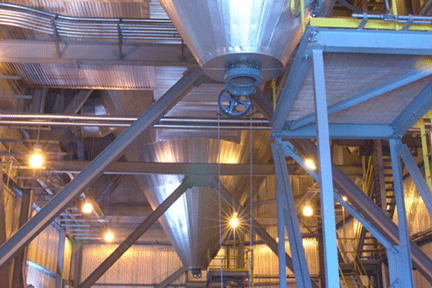Zero Liquid Discharge (ZLD) Spray Dryers
For coal-fired power generation applications, B&W's spray dryer offers true zero liquid discharge by using the latent heat of the boiler flue gas to evaporate the entire wet FGD waste stream.
B&W offers advanced spray drying technology to meet zero liquid discharge (ZLD) requirements by reducing and/or eliminating liquid waste streams from a variety of sources. Spray drying is a mature technology that was developed over a century ago and has been successfully utilized in power generation applications for more than 40 years to remove SO2 from flue gas.
Our experience is backed by spray dryer installations from various industries including power, waste-to-energy, glass, hazardous chemical waste, and sewage sludge incineration.
Applications of spray drying technology include:
- Spray dryer absorber (SDA) flue gas desulfurization (FGD) for coal, oil, and high-chloride fuels (e.g., municipal solid waste)
- Elimination of wastewater from wet FGDs (ZLD)
- Evaporation of existing ponds
- Evaporation of cooling tower blow down
- Evaporation of other liquid effluent or waste streams
Download (PDF) our Technical Paper: "Salt Drying Technology for Zero Liquid Discharge"



Pugmill Conditioners in Dry Ash Handling
B&W provides solutions to mitigate discharge water from wet flue gas desulfurization (FGD) wastewater applications.
Pugmill conditioners in dry fly ash handling applications provide an opportunity to consume some of the FGD wastewater that would otherwise require extensive treatment prior to discharge. Unlike conventional pugmills that use plant process water for their wetting system, the Allen-Sherman-Hoff® pugmill recycler is a robustly designed system that enables FGD wastewater to be blended into the ash for processing. This unique solution not only provides a way to minimize the use of plant process water for ash processing, but more importantly provides an economical way to recycle FGD wastewater in the fly ash that is sent to the landfill.